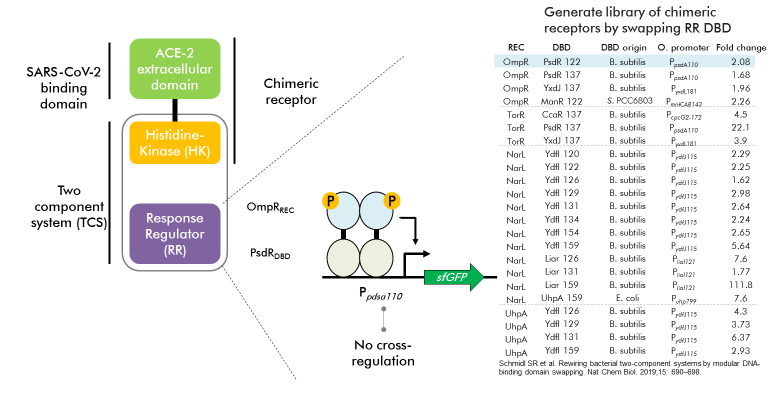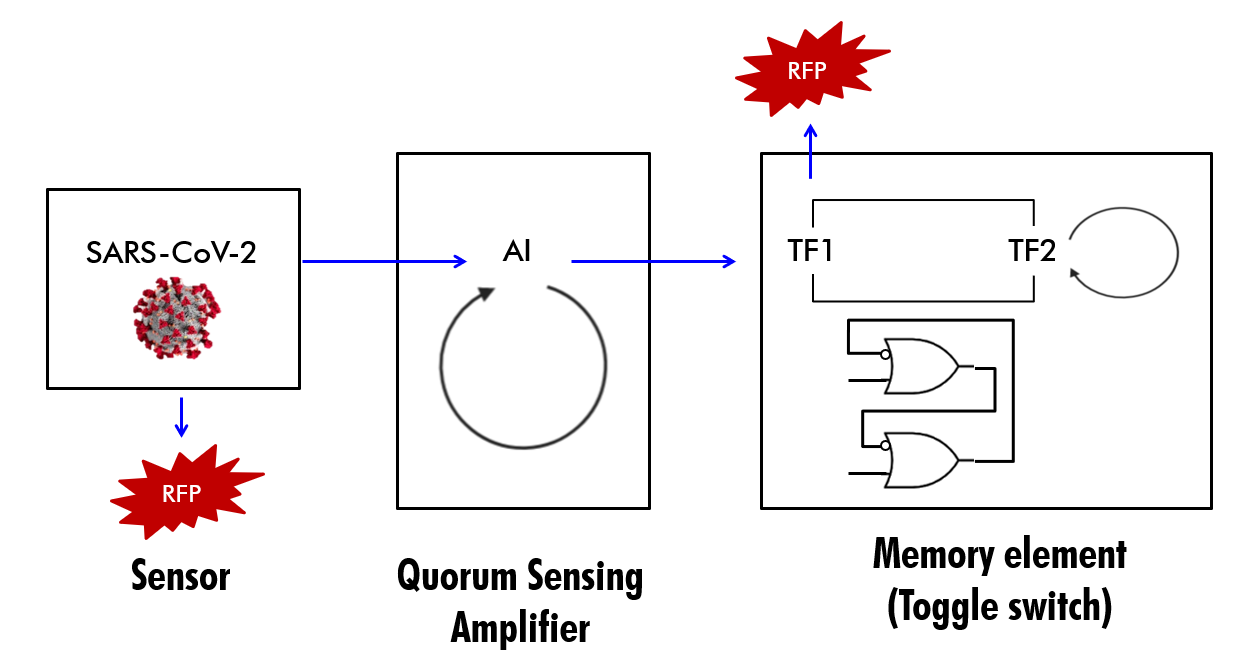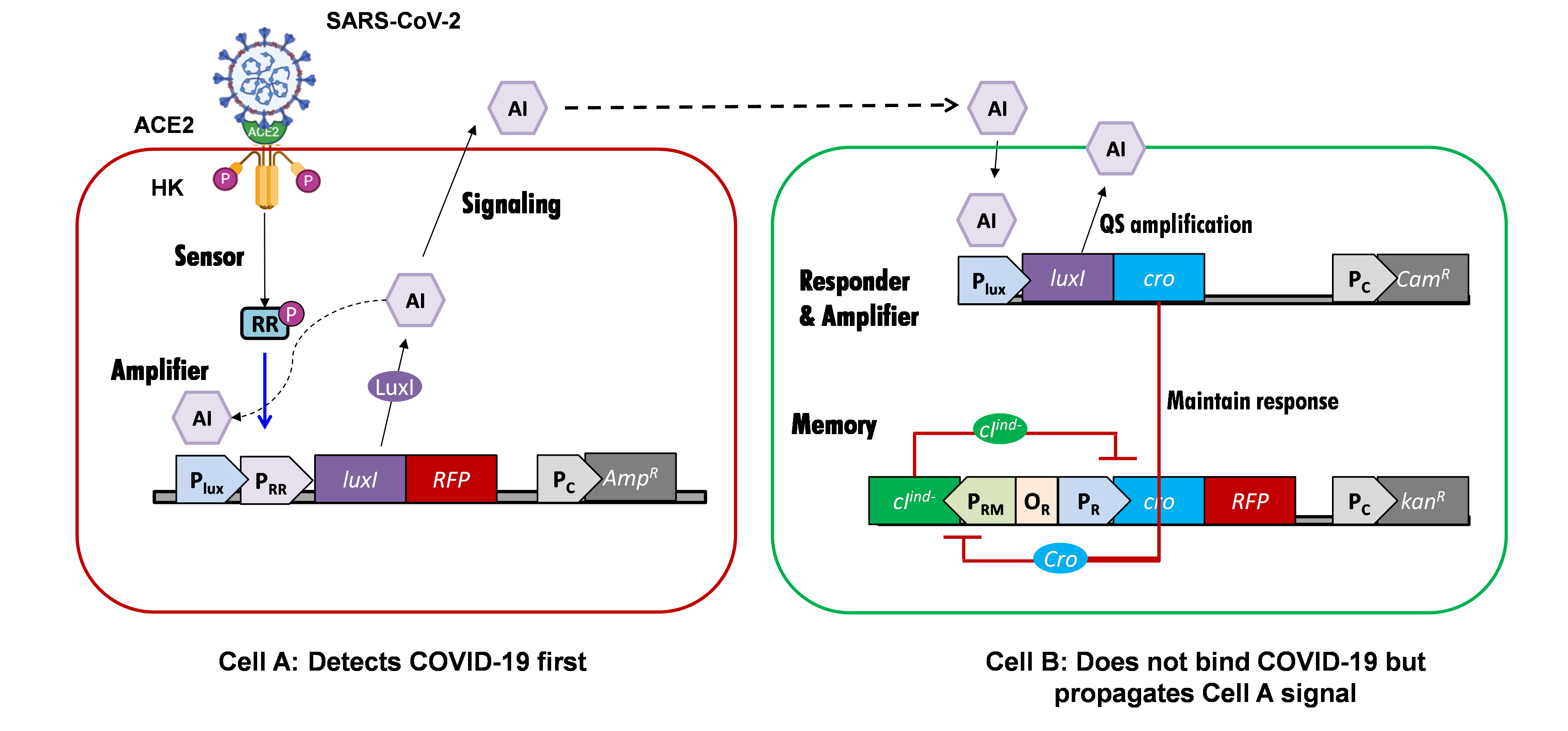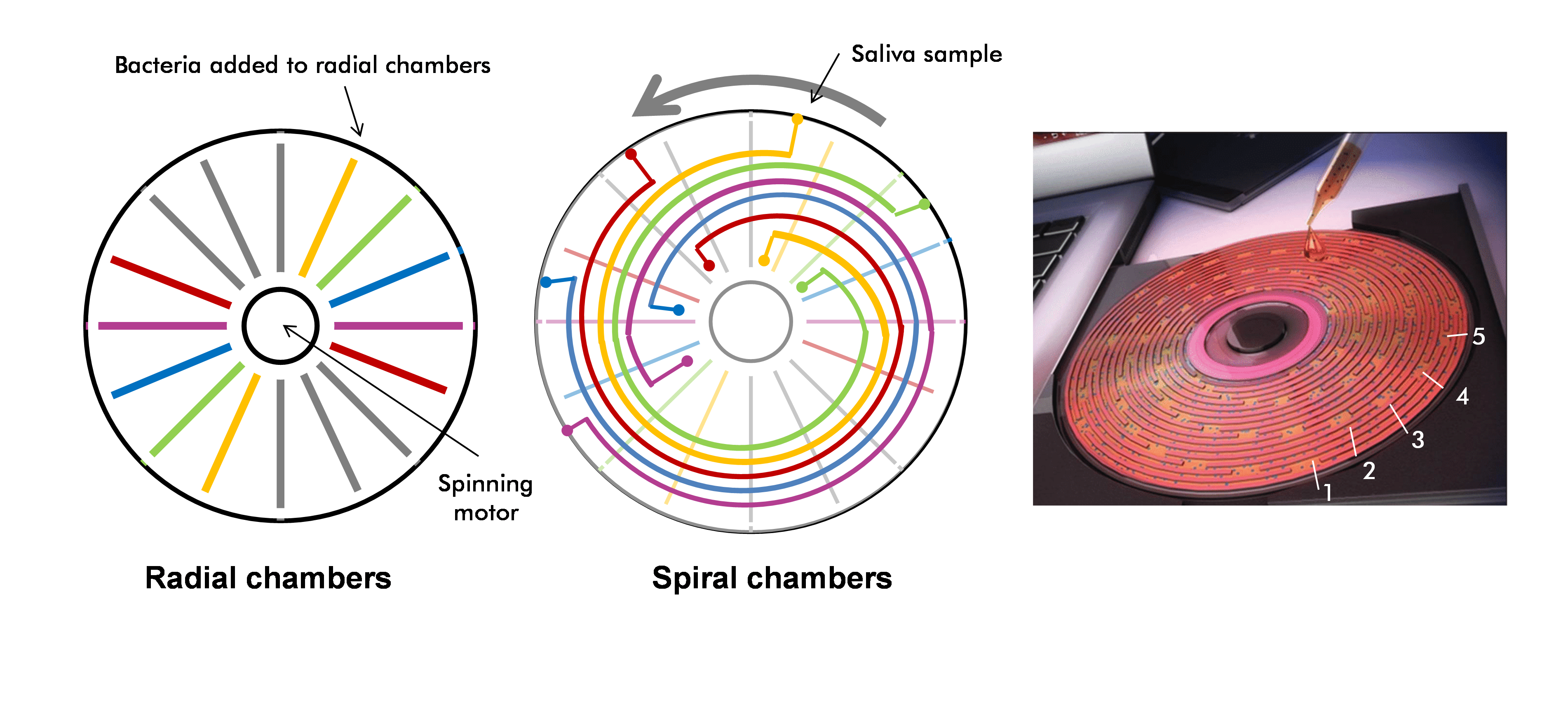FINAL PROJECT
A WHOLE-CELL COVID-19 BIOSENSOR
So... I decided to work on the initial high-level idea I proposed for COVID-19 detection during the genome engineering week
I have written a whole grant proposal but below there is a high-level summary of the project. For detailed information please reach out! at bvicente@mit.edu
Massive point-of-care and at-home testing technologies are necessary to combat SARS-CoV-2 and future unknown pandemics.
However, the real-time, broad and cheap detection of SARS-CoV-2 and other coronavirus remains a big challenge.
The virus stays in the lower pulmonary tract and high viral load is required to ensure detection of viral RNA.
RNA-based tests like PCR or antibodies are expensive and imply complex manufacturing, usually require highly trained personnel
and show high variability in the sensitivity.
Synthetic biology, through whole-cell biosensors - ie. cells that recognize the virus a produce a reporter compound in return, like a color -
can be a powerful tool to address these issues. In recent years, several studies have genetically programmed microorganisms to act as biosensors,
and that's why I propose the design of a whole-cell biosensor for SARS-CoV-2 as a means to create a new platform for early and real-time viral detection.
The main goals of the project are detailed in the following figure:
The idea is to design a hybrid receptor formed by the domain in ACE2 - the SARS-CoV-2 receptor - that binds the virus and fuse it with an intracellular signal transduction domain based on engineered histidine-kinase two component systems (TCS).



